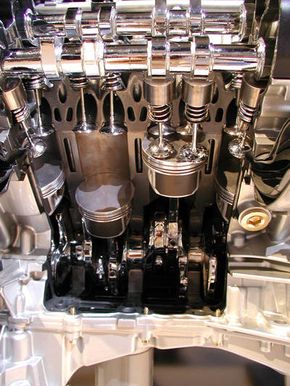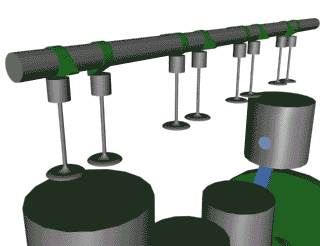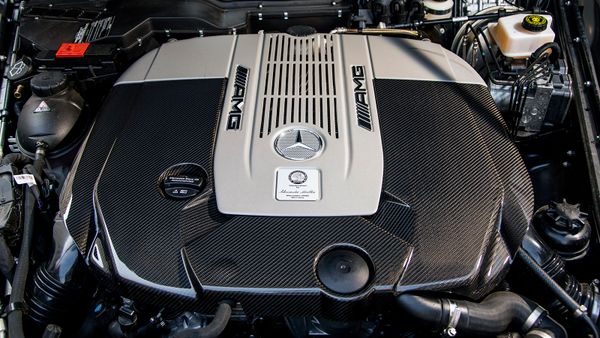Generally, engines with dual overhead camshafts (DOHC) are higher performance engines, they produce more power, and can run at higher speeds.
The camshafts have the job of opening the valves that let air into and exhaust out of the engine. The camshaft uses rotating lobes, called cams, that push against the valves to open them. Springs on the valves return them to their closed position. This is a critical job, and can have a great impact on an engine's performance at different speeds.
Advertisement
The main benefit of dual overhead cams is that they allow an engine to have four valves per cylinder. Each camshaft operates two of the valves, one camshaft handles the intake valves, and one handles the exhaust valves.
Having four valves per cylinder gives an engine several advantages.
- By having four valves in a cylinder instead of two, a larger portion of the area can be used to let air in and exhaust out. The engine can make more power if more air enters the cylinder, and it wastes less power if it is easier to pump the exhaust out of the cylinder. At higher engine speeds, the engine pumps a lot of air though the cylinders. Having four valves per cylinder allows the engine to pump enough air to run and make useful power at these higher speeds.
- Another interesting thing that some car makers do is have a separate intake runner for each of the two intake cylinders. One of the intake runners is wide and short for maximum airflow, the other is a tuned intake runner. When the intake valve is open on the engine, air is being sucked into the engine, so the air in the intake runner is moving rapidly toward the cylinder. When the intake valve closes suddenly, this air slams to a stop and stacks up on itself, forming an area of high pressure. This high-pressure wave makes its way up the intake runner away from the cylinder. When it reaches the end of the intake runner, where the runner connects to the intake manifold, the pressure wave bounces back down the intake runner. If the intake runner is just the right length, that pressure wave will arrive back at the intake valve just as it opens for the next cycle. This extra pressure helps cram more air-fuel mix into the cylinder -- effectively acting like a turbocharger.
For more articles about car engines and related topics, check out the links below.
Advertisement


